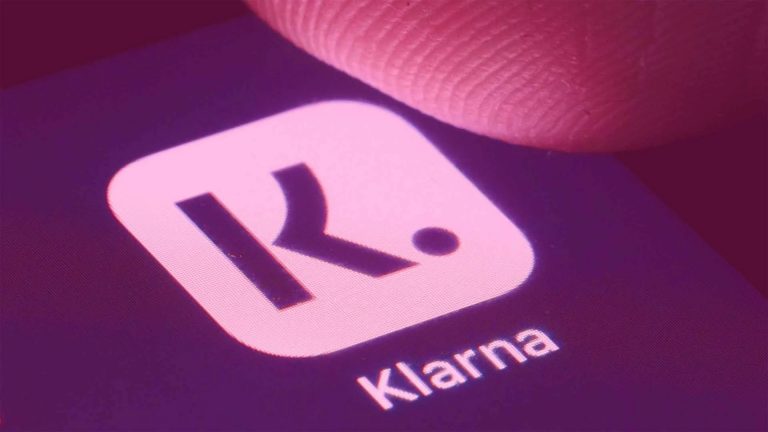
Klarna, the Swedish fintech giant known for its buy-now-pay-later services, has drastically cut its workforce by nearly 40%—a move the company attributes to a combination of artificial intelligence integration and natural attrition.
Klarna CEO Sebastian Siemiatkowski, speaking on Wednesday on CNBC’s Power Lunch, revealed that the company’s headcount has dropped from about 5,000 to nearly 3,000 over the last couple of years. “The truth is, the company has shrunk from about 5,000 to now almost 3,000 employees,” he said. “If you go to LinkedIn and look at the jobs, you’ll see how we’re shrinking.”
The company had 5,527 full-time employees as of the end of 2022. By December 2023, that number had shrunk to 3,422, according to Klarna’s IPO prospectus filed in March this year. It’s now even lower, nearing 3,000. Klarna maintains that this downsizing was not driven by layoffs alone but a deliberate decision to stop hiring, allowing natural attrition—estimated at 15% to 20% annually—to thin the ranks.
Register for Tekedia Mini-MBA edition 19 (Feb 9 – May 2, 2026): big discounts for early bird.
Tekedia AI in Business Masterclass opens registrations.
Join Tekedia Capital Syndicate and co-invest in great global startups.
Register for Tekedia AI Lab: From Technical Design to Deployment (next edition begins Jan 24 2026).
AI Is Quietly Taking Over the Back Office
While Klarna continues to frame the cuts as part of a broader efficiency strategy, it has been candid about its embrace of artificial intelligence. The company’s partnership with OpenAI in 2023 culminated in the launch of an AI-powered customer service assistant capable of handling the workload of 700 agents. To demonstrate its confidence in automation, Klarna even used an AI-generated version of Siemiatkowski to present its third-quarter results in 2023.
These moves are not merely stunts. Klarna’s internal strategy leans heavily on AI for both customer interaction and internal operations, part of a trend sweeping across major tech firms seeking cost savings and productivity boosts by automating roles once filled by thousands of workers.
However, the CEO admitted this strategy is not without trade-offs. In a separate interview with Bloomberg last week, Siemiatkowski acknowledged that an over-reliance on AI had led to a drop in service quality. He hinted that Klarna would soon be rehiring human customer service agents under a new labor model—what he described as “an Uber-type setup,” suggesting part-time or gig-based employment rather than traditional full-time roles.
Despite announcing a hiring freeze in 2023, Klarna was still seen posting job listings, a contradiction reported by TechCrunch. As of this week, the company is actively hiring for 10 roles, primarily in Europe.
AI Layoffs Spreading Across Tech
What Klarna is doing is far from unique. Early this week, Microsoft reportedly laid off approximately 6,000 workers. While the company has not released an official breakdown, insiders say that a significant portion of those cut were software engineers—roles now increasingly being replaced by AI tools like GitHub Copilot and internal AI coding assistants.
According to multiple reports, the layoffs come amid Microsoft’s aggressive expansion of AI infrastructure, particularly following its multibillion-dollar investment in OpenAI. Analysts believe Microsoft’s push to embed AI throughout its Office suite, Azure cloud services, and software development platforms is already yielding significant efficiency gains, at the cost of human coders.
The move underscores a broader reordering of priorities within the tech sector. Companies are no longer just using AI to assist workers—they are deploying it to replace them. A 2024 report by McKinsey & Company projected that up to 30% of tasks in software development, customer service, and administrative support could be fully automated by 2030, and many firms appear to be acting on that forecast much earlier.
IPO Delays Amid Market Turmoil
Klarna’s shrinking workforce comes just as it prepares for a long-anticipated public offering. The company filed its IPO prospectus in March and was expected to list earlier this year. But the market took a hit in early April when President Donald Trump, seeking to reassert trade dominance in his current administration, announced sweeping new tariffs targeting key U.S. trading partners. The surprise announcement rattled global financial markets and prompted Klarna, along with other companies like ticket marketplace StubHub and trading platform eToro, to delay their IPOs.
Now, with some calm returning to equity markets, IPOs are starting to trickle back onto the calendar. EToro went public this week with its stock popping after pricing above its expected range. Fintech company Chime Financial filed its IPO papers on Tuesday, and digital health firm Hinge Health is expected to list next week.
Klarna, however, has remained silent on an updated timeline, leaving market watchers speculating on whether it will proceed before year-end or wait for stronger signals of investor confidence.
The Future With Fewer Humans, More Machines
Klarna’s transformation—marked by a shrinking workforce, increased reliance on AI, and experimental labor models—may well serve as a blueprint for what the future of work looks like in the tech industry. But it also raises tough questions about the pace of AI adoption and the fate of skilled jobs that once formed the backbone of modern tech firms.
Customer service agents, coders, and administrative workers appear to be the first wave of job roles most vulnerable to AI automation. Klarna’s acknowledgment that AI-only support has limitations suggests that the human touch is still valuable, but perhaps only when offered on-demand and without long-term costs like pensions, healthcare, or job security.



